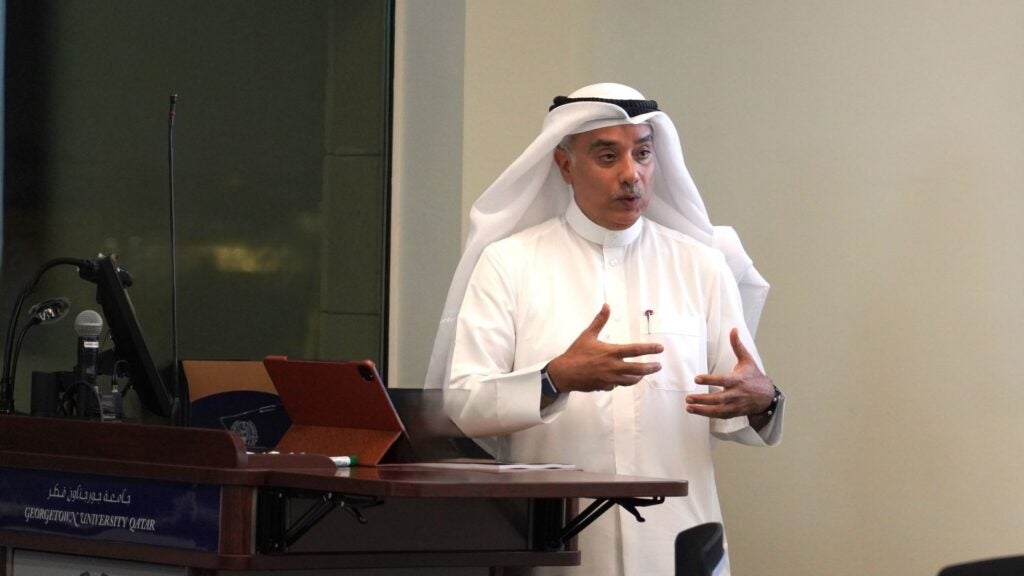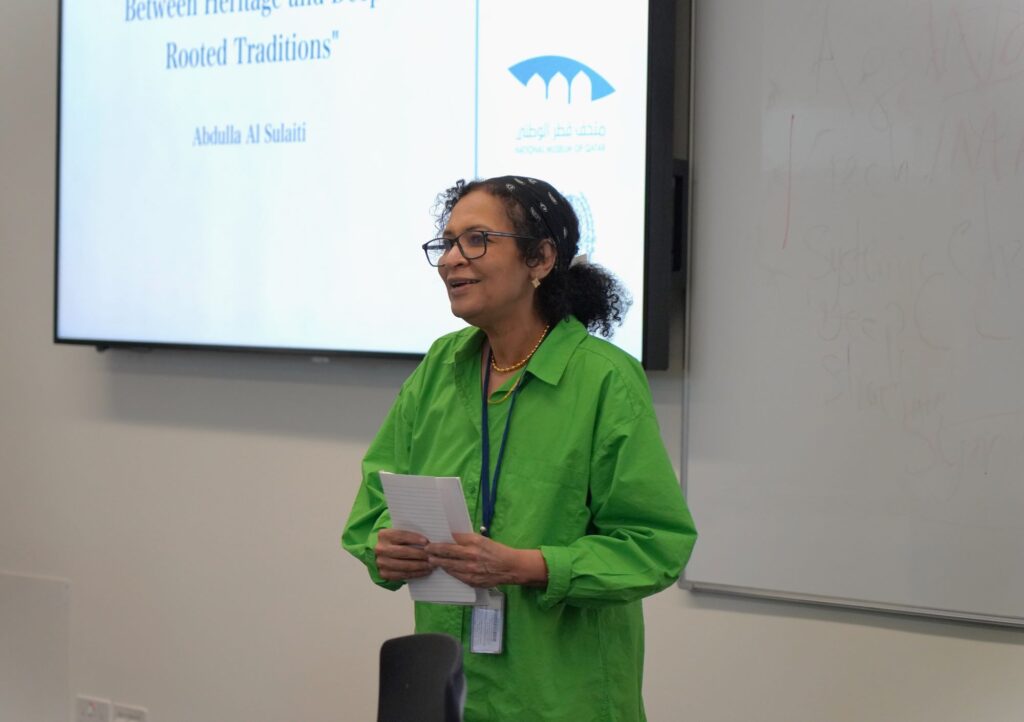Qatar Ethnography Class Hosts a Series of Local Heritage Professionals to Teach Cultural Preservation

Georgetown University in Qatar (GU-Q) students studying Qatar’s culture and people were treated to a brief history of the impact of the pearling industry on Qatar’s culture from Dr. Abdulla Al-Sulaiti, Deputy Director of research and collections at Qatar Museums. His talk, titled “Diving Community in Qatar: Between Heritage and Deep-Rooted Traditions,” highlighted how long before the discovery of oil and gas transformed Qatar, pearl diving was the cornerstone of the Qatari economy, shaping the cultural and social fabric of the nation. The important values of resilience, hard work, and community bonds established during that period remain important to Qatari society today, he explained.
Dr. Al-Sulaiti’s presentation was one of a number given by guests to a course on Qatar Ethnography taught by Dr. Rogaia Abusharaf, Professor of Anthropology. The course aims to provide students with theoretical and practical tools and inspire them to create ethnography projects that engage with Qatar’s rich heritage.

“Local knowledge production is important, we must plant the seeds that encourage our younger generation of Qataris and their international classmates to produce narratives and analysis from their point of view as cultural insiders,” said Dr. Abusharaf, adding: “I have been concerned about the partiality of anthropological work produced in Euro-Americans contexts that do not reflect the facts on the ground.”
Dr. Al-Sulaiti modeled how a cultural insider can offer more context, by going beyond Western narratives which focus on the economic aspects of pearling, to explain the social implications. He detailed how pearl diving in the Gulf was not just a profession in pre-oil Qatar; it was a way of life, and the pearls collected were used as an asset, rather than punctured for jewelry. Bringing students back in history through drawings, photos, and films of the locally built dhow pearling boats, pearl divers, diving tools, and by playing recordings of traditional chants and rhythms of the divers, Dr. Al Sulaiti made a powerful case for how the lifestyle and dangers of pearling forged a unique culture in Qatar, and was a source of great pride.
“It goes back thousands of years. Qatar, was recognized as one of the prime sources of pearls, standing out even among other Gulf pearls which were highly prized for their exceptional quality,” he explained. At the height of the industry, in the late nineteenth and early twentieth centuries, nearly every Qatari family had a connection to the pearl diving industry. This trade connected Qatar to the wider world and helped build its early reputation as a commercial hub. “By the 19th century, Qatar became a key player in the global pearl trade, exporting pearls to markets in India, Persia, Europe, and beyond.”
Though pearl diving ceased to be a key economic activity, its legacy has lived on in the cultural identity of Qatar, concluded Dr. Al-Sulaiti. The memory of the divers’ perseverance, bravery, and communal spirit is still cherished, and the traditions associated with the practice are preserved through festivals, museums, and education.
Students appreciated the presentation as an additional example of how to create an ethnographic study of Qatar, following presentations by other prominent community members including Mohammed Hammam Fikry, Heritage and Rare Books Advisor at Qatar Foundation, renowned architect Ibrahim Jaidah, Group CEO and Chief Architect of Arab Engineering Bureau and Ibrahim Jaidah Architects and Engineers, and author of multiple books on Qatar’s architecture. “My hope with these talks is that my students can be exposed to the most prominent Qatari stakeholders’ architects, archivists, and curators as role models and resources,” said Dr. Abusharaf. Students are currently working on their own ethnographies of Qatar, which will be presented at the conclusion of the course.